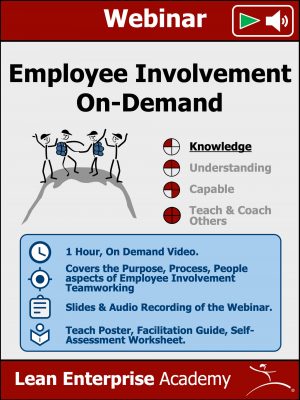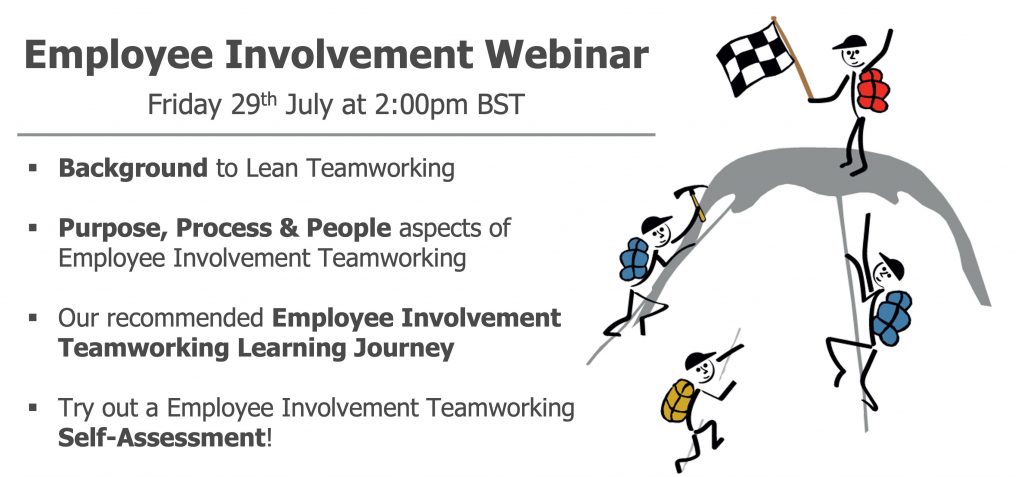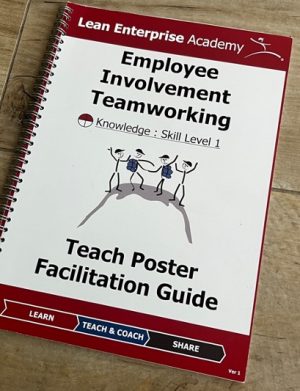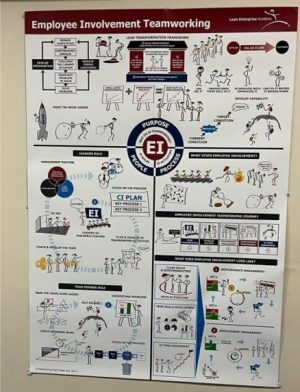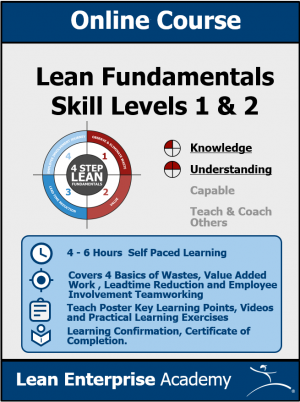Why is Employee Involvement Team Working so important in helping build the right Lean Culture?
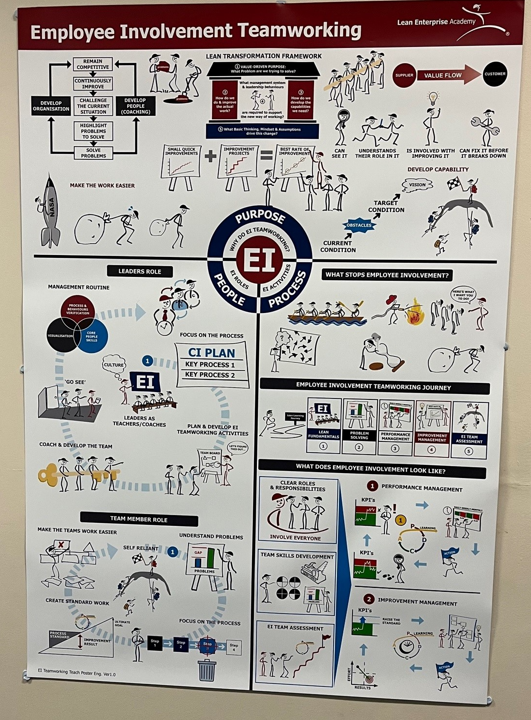
Creating a Lean Culture provides a highly sort after competitive advantage for any organisation. This is done through improving Customer Value/Service, Safety, Quality, Delivery, Efficiency & Cost Reduction.
Engaging people to improve an organisation cannot be achieved unless everyone is involved in solving their problems and improving the work through good team working. A Senior Toyota Manager once said to me “Lean is really just about good team working!”.
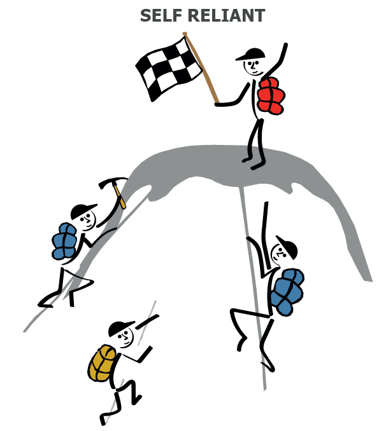
Lean Thinking & Practice has a clear view on how to involve team members to improve their own work. Involving people through structured daily lean team working activities can make them feel more valued.
It also enables the development of people capability. Thus they can contribute more and everyday through problem solving and improvement activities. This will help them become “Self Reliant!“
The alternative that many organisations follow is a “Circle of Doom” through command and control cost cutting (usually done with very little understanding of the impact of Customer Value/Service , Safety, Quality, Delivery, Cost etc). Some organisations also focus on the sole reliance on expensive system controls or latest technology, rather than tapping into their peoples creativity and innovation. ( Creativity before capital – is how I was taught to make improvements – Kaizen!)
Do you have a “Learning Process” to develop a Lean Teamworking Culture?
The Employee Invovlement (EI) Teamworking Journey visualised above is a learning process for leaders to develop a lean team working culture with team members.
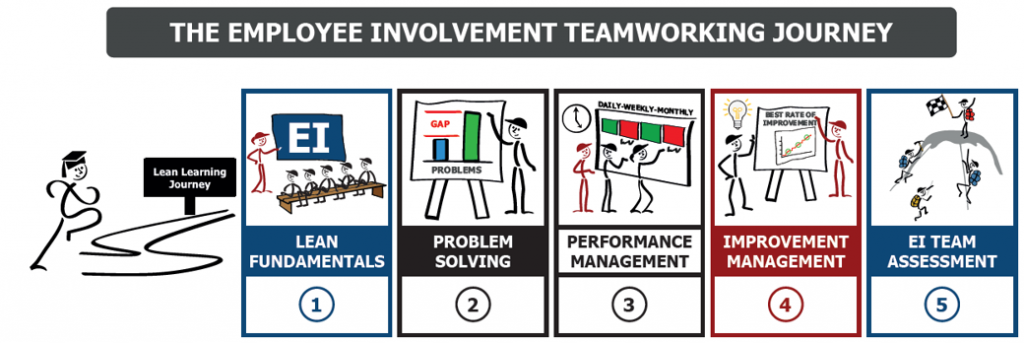
Following these key 5 steps (as explained further down in the article) will help a team to develop the necessary capabilities, systems and management routines to implement lean team working more effectively.
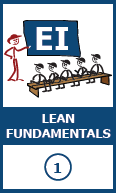
1. Start with Lean Fundamentals!
A Fundamental concept of Lean is to know how to capture and understand what the actual work activities are (Value added & Non-Value Added). As well as how they should be performed to help achieve your value driven purpose.
Key work standards should be clearly defined first at a detailed work level. This is so Team Members can follow and be instructed properly on how to do the work.
Creating “Work Standards” enables the work to be done repeatably, safely, with the right quality/service level, in the right time, with the right capabilities and at the right cost. Once you have work standards/processes in place, you then have a baseline to manage performance and also improve the work!
Lean Fundamentals forms a foundation knowledge to build on. This is so that everyone can be involved in improving the work. Knowledge & understanding of the basic lean concept helps create the right mindset and thinking to improve. The EI Teamworking Journey starts with getting everyone aligned on the very basics of Lean Thinking & Practice. Lean Fundamentals introduce team members through “learning by doing” to understand:
- Waste Reduction – identify & eliminate waste in work processes
- Value Added & Non-Value Added Work – eliminate unnecessary work and reduce non-value added activities
- Lead Time Reduction – why using it is a basis for eliminating waste
- Employee Involvement Teamworking – describes the organisational roles & responsibilities, systems/activities and capabilities. These are needed to involve team members to improve the work everyday!
2. Develop Capability for Problem Solving
Problem solving is the number 1 lean skill that is needed across all areas of an organisation. The second step on the EI journey focuses on developing problem solving capability. From this team members can use a scientific method to robustly solve problems in their daily work and help achieve improvement goals.
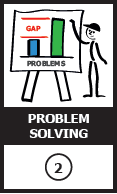
After developing themselves, the leaders then need to develop each team member in Rapid Problem Solving (RPS). RPS is a 4 step method to scientifically solve problems (not just jumping to solutions). RPS is focused on the more “day to day” and low to mid complexity problems. These problems will appear in the daily work of team members.
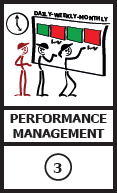
3. Develop a Management System for Performance
Step 3 focuses on developing a robust performance management system. This will enable the team to monitor problems with the work, quickly solve them and then to get back to standard. Without investing time for a regular daily review, you will not be able to maintain process performance.
You may also be able to not address problems quickly as the business conditions change. Problem solving capability is key to good performance management.
For a performance management system to be effective, the actual key work processes must be clearly defined first. Creating work standards enables the work to be done repeatably and:
- Safely
- With right quality/service level
- In the right time
- With the right capabilities.
- At the right cost (internal/external)
Once you have work standards/processes in place, you then have a baseline to manage performance too. A performance system is needed to manage and maintain the stability of the daily work processes.
Everyone needs to understand if the are winning or losing to the key work processes. A daily process for the Plan-Do-Check-Act (PDCA) cycle of key work processes should be in place. Therefore any problems/gaps in process Key Performance Indicators (KPIs) can be acted on.
A 10-15 minute review should be allocated to understanding performance and managing the problem solving actions to close the gaps. Just reviewing the gaps in process performance KPIs is pointless. You also need to be driving problem solving actions to close the gaps. Otherwise repeat problems will carry on occurring and won’t be stopped – just contained.
4. Develop a Management System for Improvement
Regular and organised improvement activities can quickly help develop a “Kaizen Mindset” (Improvement Mindset) to continually challenge the way the work is done.
Managing improvements requires the team to carry out different activities rather than just managing daily performance. Activities need time to be implemented and are usually focussed on longer term organisational goals.
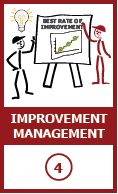
In step 4, the team will develop an improvement management system. This enables them to prioritise and carry out their improvement activities. The purpose is to visualise, plan, implement and track the progress in all aspects of the teams key process improvement activity.
A team needs regular dedicated employee involvement time to problem solve and progress improvement actions. Improving the work and developing team members capability should be done at the same time (rather than separate training).
Team members need to be developed in the appropriate lean tools & methods (such as Standardised Work, 8 Step Business Process Improvement, Visual Management etc.). This is so they can use the right lean tools & methods to tackle their situational problems/goals.
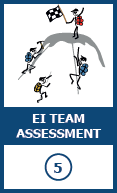
5. Complete an EI Teamworking Assessment Periodically
Carrying out an EI Teamworking Assessment enables the team to self-reflect. It also allows them understand what gaps they have in achieving the goal of becoming self-reliant. The EI Team self assessment is carried out by the whole team. It demonstrates 5 levels of progression towards an excellent level of EI teamworking.
The whole team reads through each level of the self assessment, starting at level 1. The team will then debate each level criteria and place a tick to represent they meet the criteria in full, or a cross to indicate they haven’t yet fully meet it. The team should progress through one full level at a time and focus on improving one activity at a time in their plan.
Following a P-D-C-A process ensures EI team activities & systems are reflected on and challenged for improvement. EI teamworking should eventually become the way we act and behave everyday!
Leaders need to develop themselves to enable better team working
Developing a Lean Teamworking culture can only be done by the leadership supporting and building the lean capabilities of team members. This will allow them to become self-reliant in daily problem solving and process improvement.
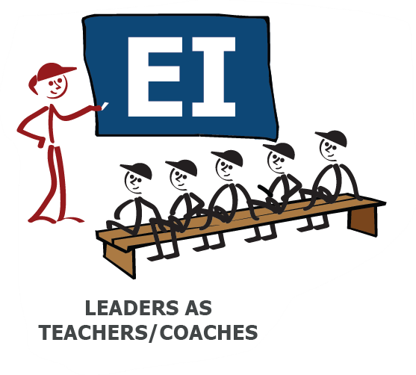
Leaders need to learn together and practice developing their lean skills in order to teach & coach their own teams.
Leaders also have the added bonus of ensuring they have developed the right level of “people skills”. This will enable them to better understand different behaviours, motivations and support skill progression.
The Leadership Core Skills of Recognition, Constructive Feedback and Coaching can then be practiced through designed Management Routines. Designing and developing Management Routines to support team working activities is the key to ensuring a successful Teamworking Culture.
Once team members have learned the first two steps on the EI journey, the leaders can begin to coach and support them to problem solve and improve their key processes. Leaders need to both teach the skills to their team and coach them to become capable. Thus Team Members will become ultimately self-reliant!

Employee Involvement is a Competitive Advantage
Our Lean Fundamentals course (online or face to face) will bring you to the starting point of being involved in improving an organisation through EI Teamworking.
Then follow the EI Teamworking Journey to help your organisation achieve a competitive advantage. As well as making the daily work easier for all of the team members!
Employee Involvement On-Demand Webinar
If you are interested in learning more about Employee Involvement Teamworking, we have made our Employee Involvement Webinar available to access, along with all the materials used in the session. Using our visual Teach Poster we explain the Purpose, Process & People of Employee Involvement (EI) Teamworking. The session also explains our recommended EI Teamworking Journey, as well as our EI Teamworking Self-Assessment for teams.
Employee Involvement Teamworking Materials
Here are some recommended Learning Materials we have developed to help support you on your Employee Involvement Learning Journey:
